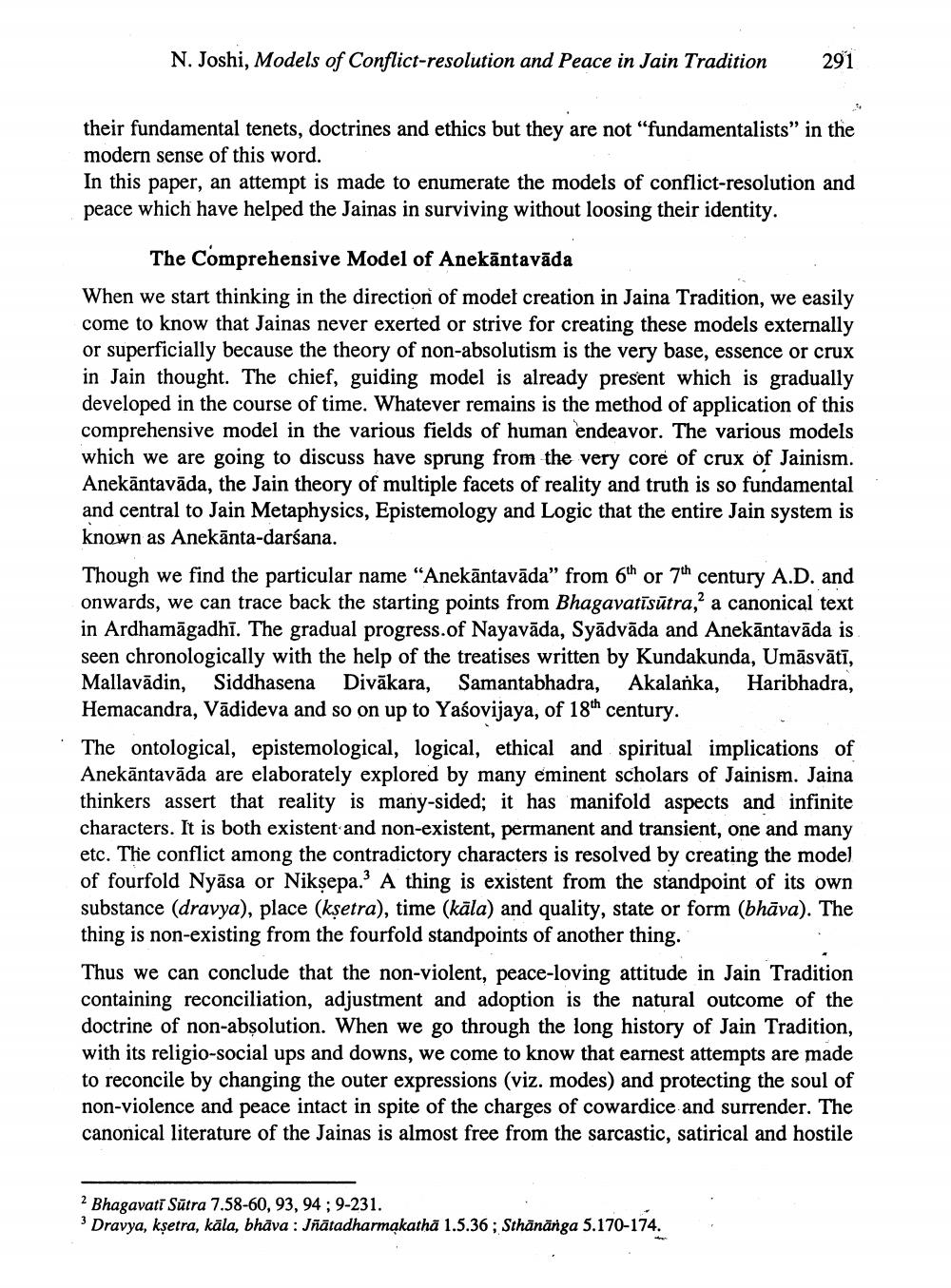________________
N. Joshi, Models of Conflict-resolution and Peace in Jain Tradition
291
their fundamental tenets, doctrines and ethics but they are not "fundamentalists" in the modern sense of this word. In this paper, an attempt is made to enumerate the models of conflict-resolution and peace which have helped the Jainas in surviving without loosing their identity.
The Comprehensive Model of Anekāntavāda When we start thinking in the direction of model creation in Jaina Tradition, we easily come to know that Jainas never exerted or strive for creating these models externally or superficially because the theory of non-absolutism is the very base, essence or crux in Jain thought. The chief, guiding model is already present which is gradually developed in the course of time. Whatever remains is the method of application of this comprehensive model in the various fields of human endeavor. The various models which we are going to discuss have sprung from the very core of crux of Jainism. Anekāntavāda, the Jain theory of multiple facets of reality and truth is so fundamental and central to Jain Metaphysics, Epistemology and Logic that the entire Jain system is known as Anekānta-darśana.
Though we find the particular name "Anekāntavāda" from 6th or 7th century A.D. and onwards, we can trace back the starting points from Bhagavatīsūtra, a canonical text in Ardhamāgadhī. The gradual progress.of Nayavāda, Syādvāda and Anekāntavāda is seen chronologically with the help of the treatises written by Kundakunda, Umāsvātī, Mallavādin, Siddhasena Divākara, Samantabhadra, Akalanka, Haribhadra, Hemacandra, Vādideva and so on up to Yaśovijaya, of 18th century. The ontological, epistemological, logical, ethical and spiritual implications of Anekāntavāda are elaborately explored by many eminent scholars of Jainism. Jaina thinkers assert that reality is many-sided; it has manifold aspects and infinite characters. It is both existent and non-existent, permanent and transient, one and many etc. The conflict among the contradictory characters is resolved by creating the model
urfold Nyāsa or Nikṣepa. A thing is existent from the standpoint of its own substance (dravya), place (kşetra), time (kāla) and quality, state or form (bhāva). The thing is non-existing from the fourfold standpoints of another thing. Thus we can conclude that the non-violent, peace-loving attitude in Jain Tradition containing reconciliation, adjustment and adoption is the natural outcome of the doctrine of non-absolution. When we go through the long history of Jain Tradition, with its religio-social ups and downs, we come to know that earnest attempts are made to reconcile by changing the outer expressions (viz. modes) and protecting the soul of non-violence and peace intact in spite of the charges of cowardice and surrender. The canonical literature of the Jainas is almost free from the sarcastic, satirical and hostile
2 Bhagavati Sūtra 7.58-60, 93, 94 ; 9-231. Dravya, kşetra, kāla, bhāva : Jñātadharmakathā 1.5.36; Sthānānga 5.170-174.




